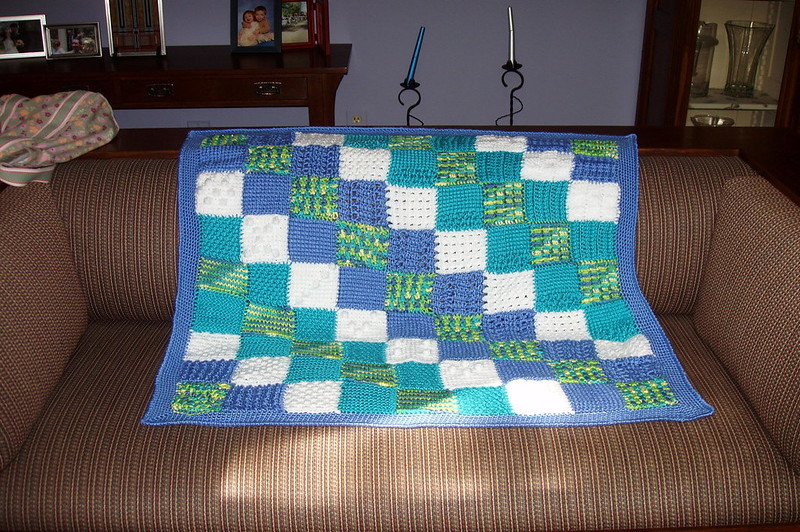If you’re worried about your child who constantly fidgets around, you need to learn how to make a weighted lap blanket for him/her.

Considered a great tool by occupational therapists, a weighted blanket gives a child information about his/her body.
When you want them to sit still, hand the blanket to help them stay put.
For the longest time, the blanket has been a well-known aid for the community of children on the autism spectrum.
Supposedly, it helps them become less restless, calming them as a result.
If your child has autism, this can help them ease anxiety and even improve sleep.
The Science Of Weighted Blankets
A weighted blanket is one great source of proprioceptive input.
As the weight registers, the proprioceptive input in the joints allows someone to make sense of their bodies.
In turn, one can regulate movements to help them navigate their surroundings, so they wouldn’t trip or fall.
When autistic children receive this input, they become calmer. This also benefits people suffering from ADHD or PTSD.
However, for children with autism seeking therapeutic benefits, the use of weighted blankets is closely monitored by occupational therapists.
Materials Needed
Where does the weight come from? Inside a lap blanket, you would find either rice, pellets, or beans.
Any will do, as long as the child likes it, but you have to consider the price.
Beans tend to be the cheapest material out there. Also, take note of how the total weight of fillers should only be 10% that of your child.
Anything beyond 15% can be dangerous for your child’s health.
You’ll also need an old pillowcase or any soft fabric you can find.
The common size for lap blankets falls around 20″ ×30″, although if your child is bigger or smaller, you can adjust accordingly.
Decorations are welcome, but the standard is usually plain, to draw the least attention for the child.
Other materials
- Measuring cup
- Scissors
- Scale
- Chalk (to mark the fabric)
- Needles
- Thread
- 1/2 yard of fabric
Once you have the materials ready, you can start making a weighted lap blanket.
Below is a simple step-by-step guide you can follow.
How To Make A Weighted Lap Blanket
- Step #1. Clean the pillowcase first. Wash it with soap before letting it dry, and afterward, iron to eliminate creases.
Then, take the pillowcase and fold it in half to create pockets in 4 equal sizes, which you will mark with chalk.
- Step #2. For each pocket, measure the same amount of weight for either rice, pellets, or beans.
Separate the fillers into a container and save them for later.
- Step #3. Proceed to sew shut three sides of the pillowcase. If the pillow isn’t square-shaped, trim the fabric first.
You will close the three sides of the pillow, leaving one out for the fillers to enter through.
- Step #4. Put the fillers inside the pillowcase through the gap you left open earlier.
Once full to the brim, sew the opening with needle and thread. Check if no filler falls out of the four sides.
- Step #5. Prepare the fabric you’ll use later in wrapping the pad and cut it into two pieces. With chalk, draw lines around the padding.
Remember to leave a few inches for each side—you will use this later to make covers for the pad.
- Step #6. Place slits (about 2.5 inches) at the edges of the fabric where you’ll slide the pads in.
For both pieces of fabric, make sure the slips are uniform. Insert the padding between the two pieces and close the flap by tying a knot.
How do you monitor the use of weighted blankets?
Only do so with the supervision of a physician.
It can only stay in the lap for about 20 minutes at most and, during therapy, the child can remove the blanket at any point.
Before using the blanket, however, seek advice from an occupational therapist.
When is it appropriate to use them?
Since the blanket is an aid for physicians, the blanket is mainly used during therapy sessions.
Usually, the children would sit on the floor with the blanket placed on their laps.
Otherwise, they have it while seated at a table as they answer schoolwork or take breaks.
Is the weighted blanket safe?
Yes, the weighted lap blanket is safe for use, if children are supervised when using them.
As an adult, however, you must inspect the blanket for holes each time.
Also, the user must be of proper age, as the blanket isn’t suitable for children under 3 yrs. old, lest small parts find themselves inside their mouths.
Conclusion
Even teachers are eager to know how to make a weighted lap blanket.
They find it useful in keeping fidgety children behaved in their respective seats.
Whether you’re a teacher or a struggling parent of an autistic child, lap blankets are undeniably great in the classroom or at home.
